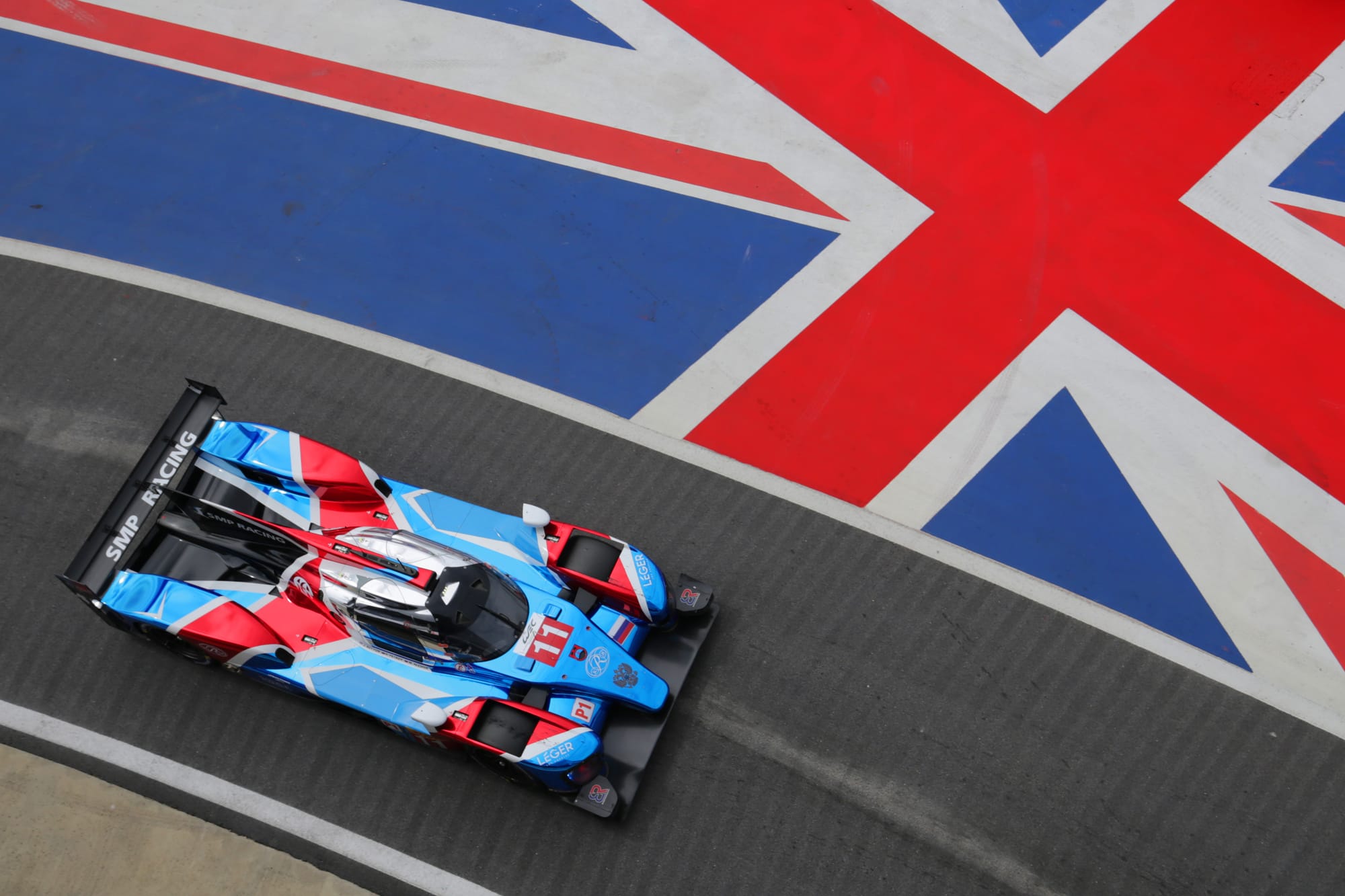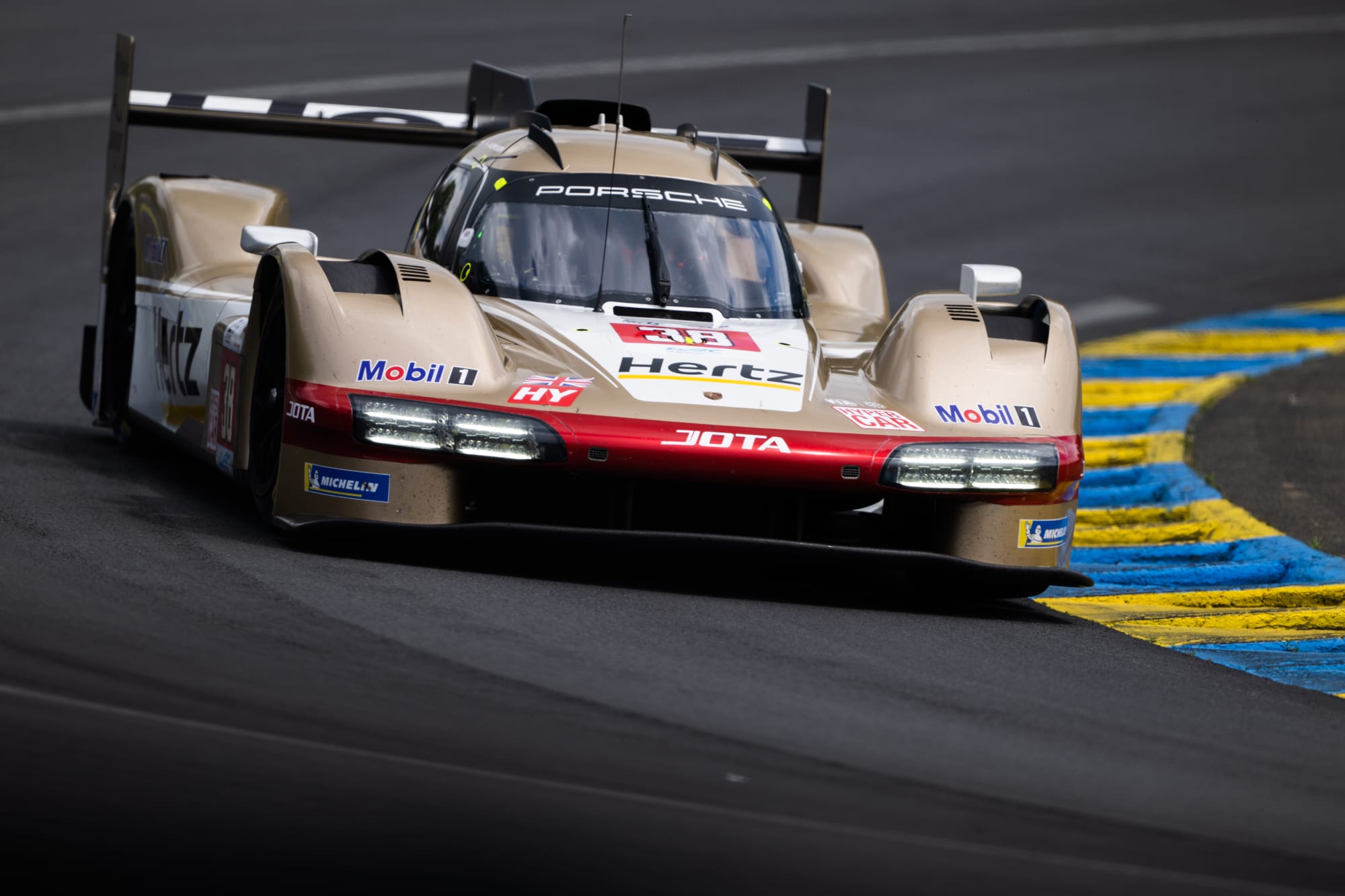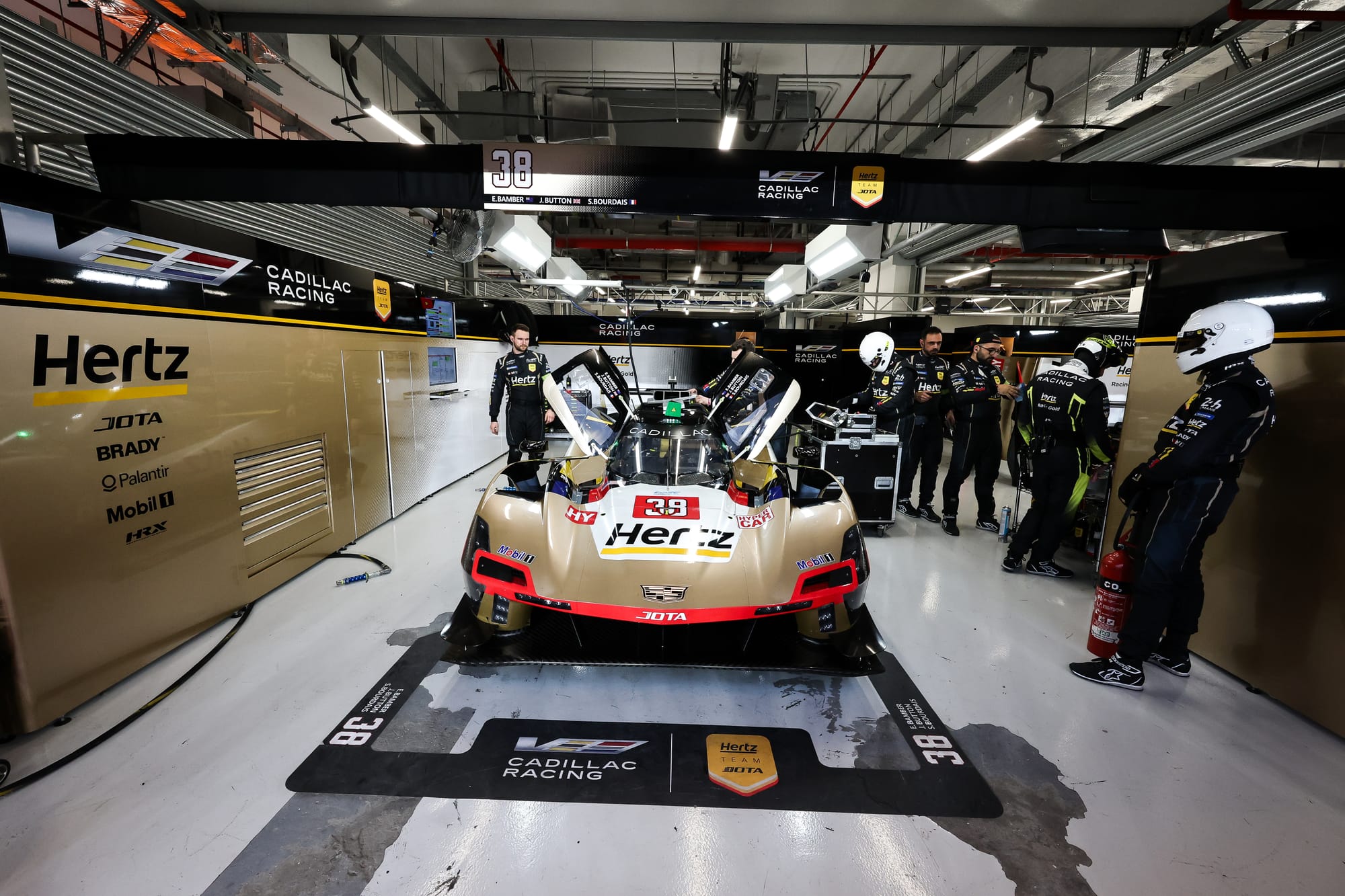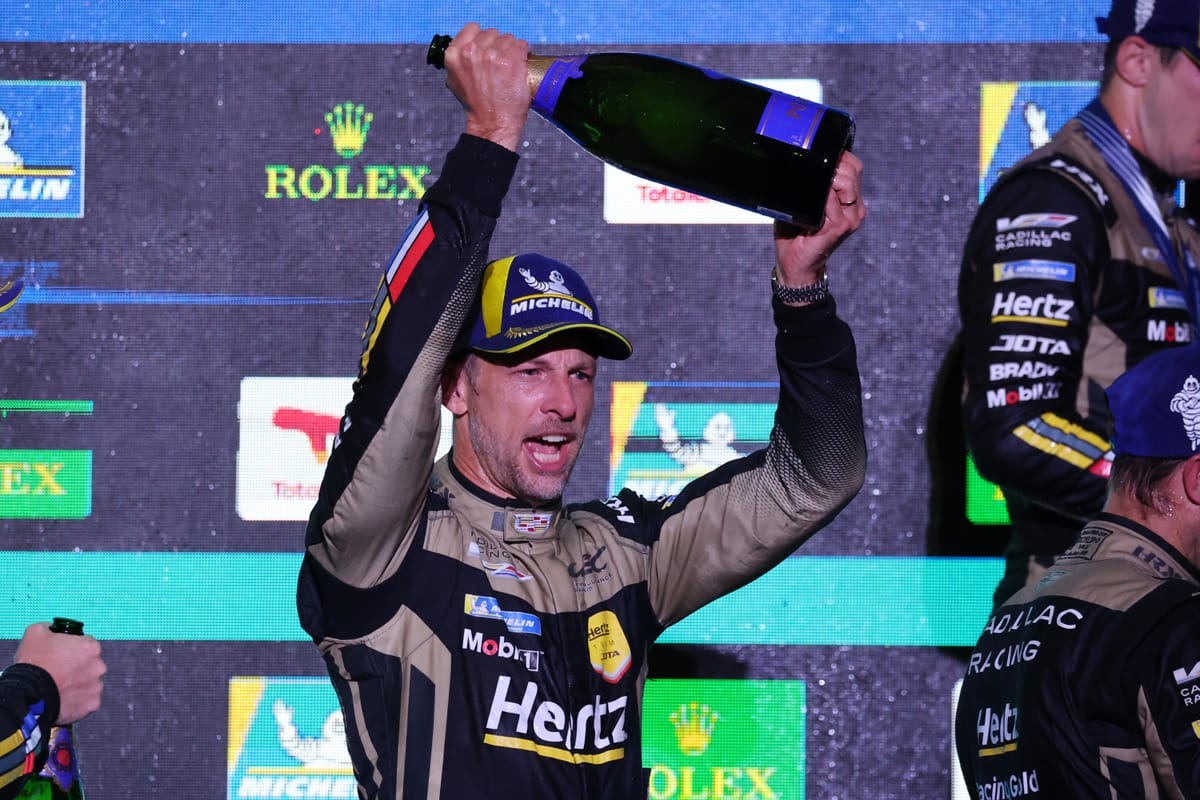On Saturday, 2009 Formula 1 world champion Jenson Button will take part in the final professional race of his career: the World Endurance Championship’s Bahrain 8 Hours, bringing to a close one of the most accomplished careers of the modern motorsport era.
As Button prepares for a moving week, we ask whether his last chapter has been a fitting farewell.
His last F1 start came in Monaco 2017, when he substituted for his friend Fernando Alonso at McLaren while the Spaniard pursued his dream of winning Indianapolis 500 and the Triple Crown.
Button’s final full F1 campaign was back in 2016, the end of a 17-year stint at the top that featured 306 grands prix, 50 podiums, of which 15 of those were victories, eight pole positions and the 2009 title with Brawn GP, a season that remains one of F1’s great underdog stories.
Now, at 45, Button’s professional journey reaches its epilogue in the WEC. He hasn’t added another win to his résumé, but with two WEC podiums and another at the Daytona 24 Hours, his record in endurance racing is far from just symbolic. The question is: has he done enough to make this final chapter a success?
Life after F1
Many F1 drivers hang up their helmets once the grand prix world’s door closes behind them. Button was never one of them. Racing has always been his lifeblood, and knowing he still had speed and fight left, he looked east for his next challenge.
In 2018, Button made the bold move to Japan, a country he’d long admired. The result? Immediate success. Teaming up with Naoki Yamamoto in the Team Kunimitsu Honda NSX-GT500, Button became the first F1 world champion to win the fiercely competitive Super GT championship.
“When I stepped away from Formula 1, I wanted a challenge that would satisfy my desire to compete at the highest level, and Super GT definitely did that,” he recalled. “We won the championship in my first season, and that’s one of my greatest achievements.”
But the constant travel between Japan and Europe took its toll, and by the end of 2019, Button decided to call time on that adventure.
In the years that followed, he dabbled in almost everything: two Baja events (think off-road rallying in trucks) in 2019, a guest outing in British GT with his own team at Silverstone in 2020 (pictured above), the first two Extreme E rounds in 2021 (a series in which he also co-founded a team), a Nitro Rallycross appearance in 2022–23, and even three NASCAR Cup Series races in 2023.
Few F1 world champions have explored such a wide range of disciplines, but Button’s curiosity and willingness to adapt have always set him apart.
A gradual path toward endurance racing
Despite those one-off experiments in varying fields, it was endurance racing that ultimately drew Button in for good. His first real taste came in 2018, with SMP Racing in the LMP1 category. Behind the Russian entry sat ART Grand Prix, run by Fréd Vasseur, now the Ferrari F1 team principal.
Button shared the BR1-AER with Vitaly Petrov and Mikhail Aleshin, and together they scored a podium finish at the Shanghai 6 Hours.
“From the moment he arrived, his professionalism was obvious,” recalled team principal Sébastien Philippe. “His technical feedback and feel for the car set-up were invaluable, and with such a young team around him, that experience made a real difference for us.”
Four years later, Button returned to the Le Mans 24 Hours, not to chase victory, but as part of the innovative Garage 56 project, driving the NASCAR Chevrolet Camaro ZL1 entered by Hendrick Motorsports. He shared the car with 2010 Le Mans winner Mike Rockenfeller and seven-time NASCAR Cup champion Jimmie Johnson.
“It’s tough to be competitive when you only do a one-off,” Button admitted. “I enjoyed every single experience, but I wanted to do a full programme.”
That wish came true in 2024. After a fifth place at Petit Le Mans with JDC-Miller’s privateer Porsche 963 and a third at the Daytona 24 Hours in Wayne Taylor Racing’s Acura ARX-06, Button joined Team Jota for a full-time WEC campaign.
Team Jota: The final challenge
Button’s two full WEC seasons would ultimately come with Team Jota, the British team co-owned by his friend David Clark, McLaren Cars director in the mid-1990s.
Sharing the car with Oliver Rasmussen and Phil Hanson, both talented but paying drivers, the #38 Porsche 963 couldn’t quite match the sister #12 car of Callum Ilott, Norman Nato and Will Stevens, all former single-seater standouts.
“In endurance racing, the real progress happens off-track,” Button admitted mid-season. “It’s data analysis, debriefs, fine-tuning set-ups.
“Early in 2024, I wasn’t ready for that level of intensity. My last full season had been in 2019 in Super GT, so I’d had four years without a complete programme.
“The first two rounds were a shock, but then I found my rhythm and started to give my best again.”
As the season went on, the 2009 F1 champion grew stronger. His trademark smooth driving style translated beautifully to endurance machinery. Perhaps his two best races were the Le Mans 24 Hours and the Fuji 6 Hours. But is that a coincidence? While the #38 Porsche could only manage ninth in La Sarthe and sixth in Japan, don’t forget that Team Jota was still running as a customer team with limited testing and resources.
That changed in 2025, when it became the official Cadillac racing team. The switch to the V-Series.R suited Button far better. Teaming up with Sébastien Bourdais and Earl Bamber, Button helped the car to several notable results, including second place at the São Paulo 6 Hours behind the sister car.
It would be a stretch to call Button the outright benchmark at Cadillac Team Jota, but that was never the point. At 45, this was a second career, and aside from Bourdais, his team-mates are a decade younger and the WEC is the pinnacle of their careers.
What’s undeniable is the impact he’s had on the team’s growth. Button’s experience, feedback, and professionalism have been crucial to that transformation. In two seasons, Jota has scored two wins and is still in contention for the world titles this week in Bahrain.
“Beyond his massive experience at the top level, Jenson has been one of the key pieces of the team,” Nato told The Race. “Despite his status, he’s humble and ego-free. He never asked for special treatment, not for qualifying runs, running plans or tyre allocation. He always puts the team first.
“In endurance racing you deal with six drivers, and internal rivalry between cars can destroy the spirit. But Jenson made life easier for everyone. He’s approachable, positive, and even in difficult moments he finds the right words. Working with him has been a privilege, and a masterclass.”
Button might not have conquered endurance racing the way he once conquered F1, but he’s shown that even a world champion can still evolve, still learn, and still give back to motorsport. And that, perhaps, is the truest definition of a successful final challenge.
Why Button has decided to stop
That trademark Button smile you see in the paddock is genuine. He’s enjoyed his WEC experience immensely, and his time at Jota has clearly reignited his competitive spirit. Which makes his decision to step away all the more bittersweet.
“Working with Jota, it’s been a real lovely atmosphere within the team, a real family atmosphere even though we’re a works team it still has that family vibe,” Button said.
“And this is such a competitive championship. The cars look cool, they sound amazing and there are some bloody amazing drivers racing in this championship, so it always makes for good racing.”
So why walk away now?
“I’ve loved my time with Jota in WEC, but life has just become too busy,” he told BBC Radio Somerset. “It wouldn’t be fair on the team or myself to commit to 2026 knowing I won’t have the time.
“My kids are four and six, and when you’re away for a week, you miss so much. I’ve missed a lot these past few years, which was fine because I knew it would happen, but I’m not willing to do that again.”
Button won’t disappear completely, he’ll continue to appear at classic events like the Goodwood Revival, purely for the love of it. But his professional racing days are over.
A true champion bows out, and you can be sure that during the WEC prize giving ceremony, there will be an emotional tribute to mark the end of an extraordinary career.
Who could replace him?
Of the six drivers who represented Cadillac Team Jota this year, Button is the only one leaving at season’s end. But with the Hypercar class now overflowing with manufacturer talent, finding the right successor is no easy task.
Mick Schumacher was initially the frontrunner, but he’s heading to IndyCar with Rahal Letterman Lanigan Racing. Ilott – a Jota regular in 2024 – remains in limbo while Prema Racing’s IndyCar plans hang in the balance.
Then there are the drivers already familiar with the Cadillac V-Series.R: Louis Delétraz, Felipe Drugovich, and Jack Aitken. The Race understands it’s Aitken who has emerged as the favourite to take Button’s seat alongside Bourdais and Bamber in the #38 car.
Aitken has raced the V-Series.R in IMSA since 2023 with Action Express Racing, and has built a strong partnership with Bamber, winning the final two rounds of the 2025 IMSA SportsCar Championship, including Petit Le Mans. At Le Mans, Aitken even set the fastest time of the entire week during Hyperpole 1.
The only potential snag is a schedule clash between Long Beach (IMSA) and Imola (WEC) on April 19-20. Aitken is expected to prioritise the US event, while Bamber will stay in Europe, with current Mercedes F1 reserve Fred Vesti likely stepping in as a one-off replacement in California.

